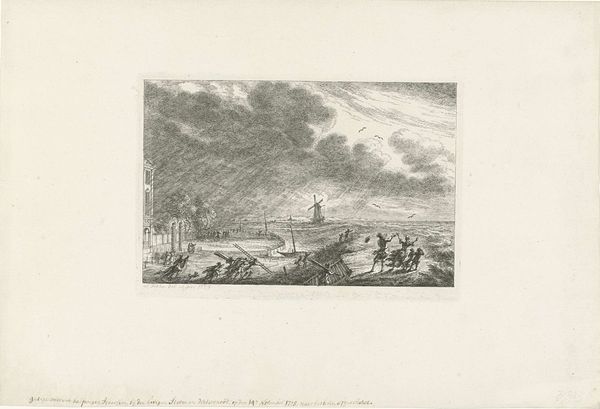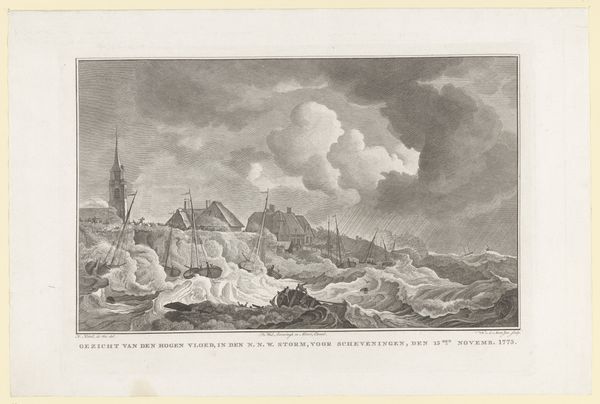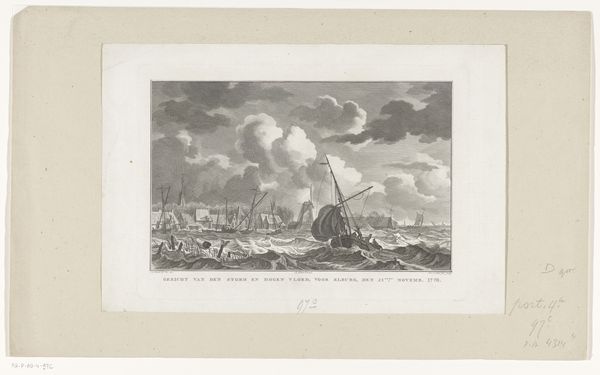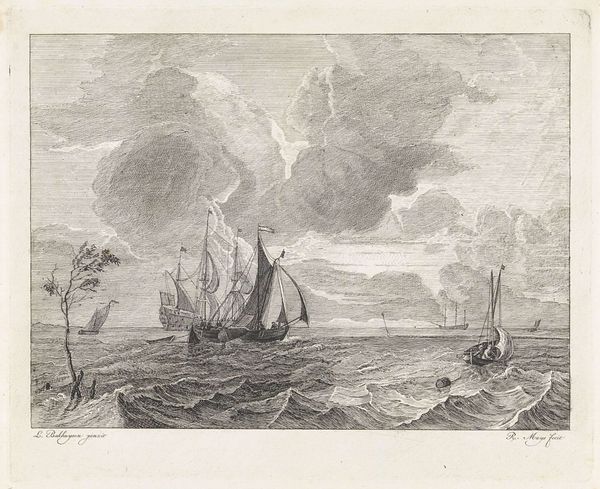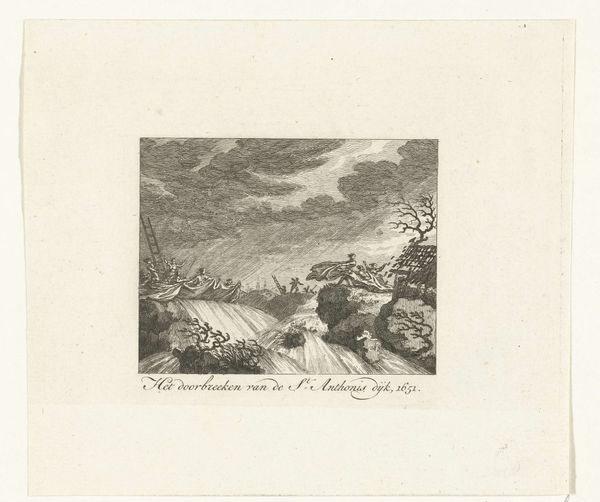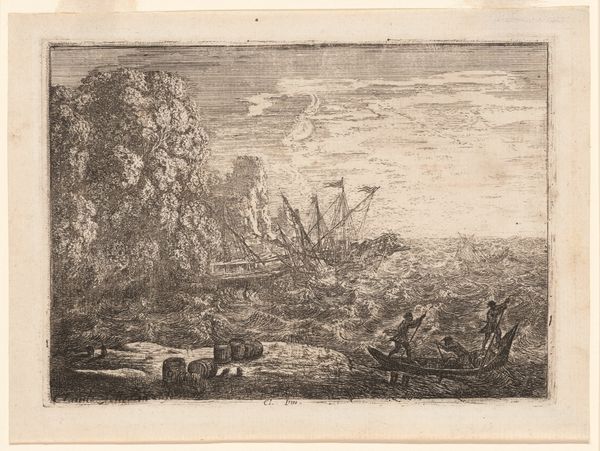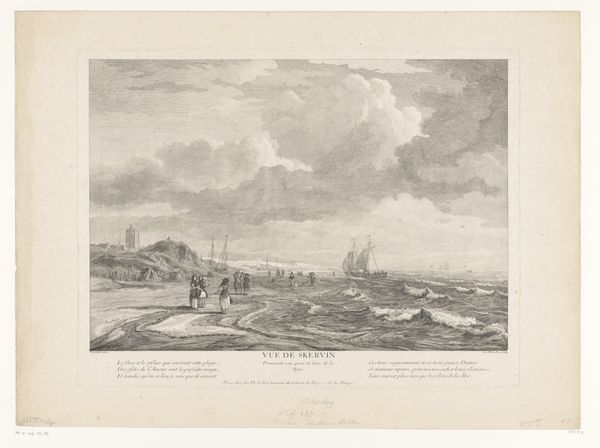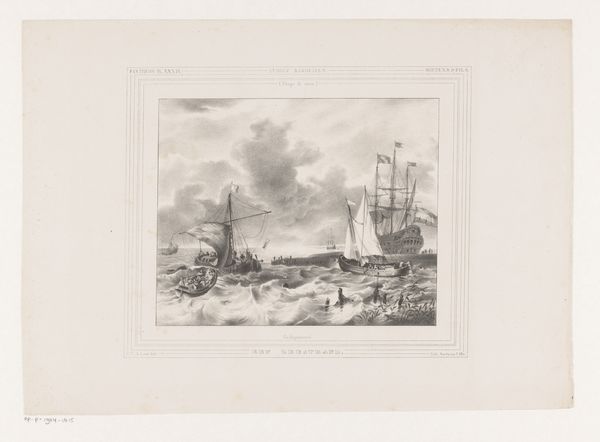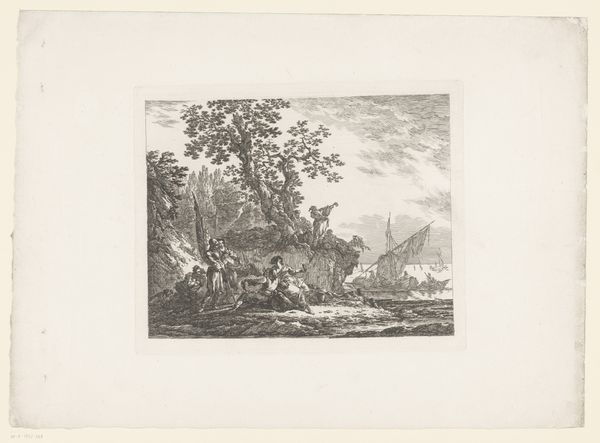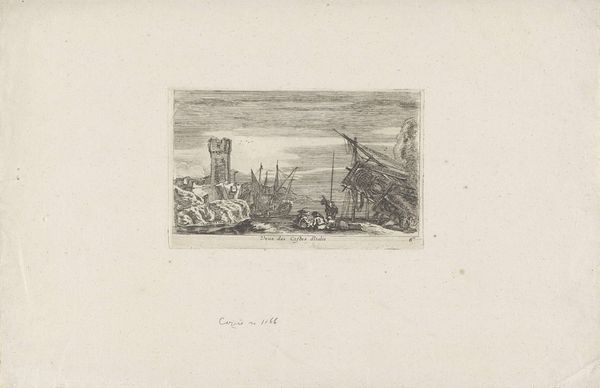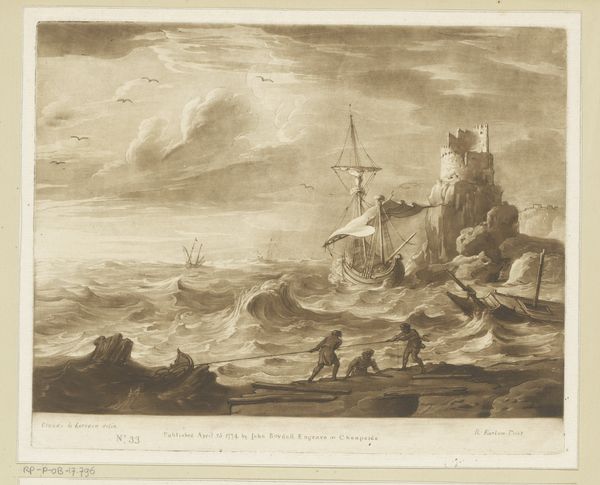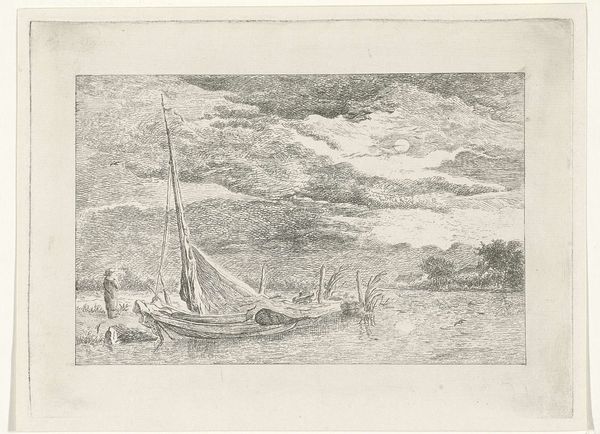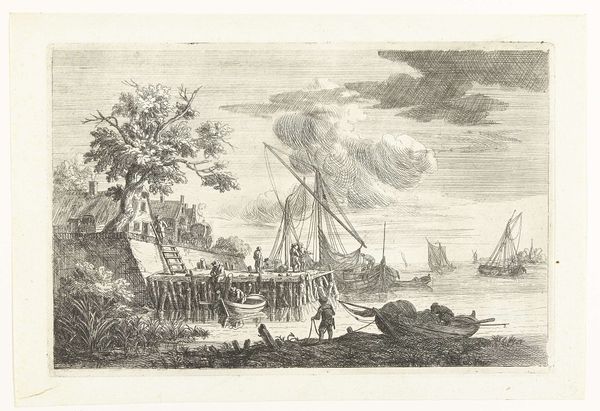
Dimensions: height 230 mm, width 310 mm
Copyright: Rijks Museum: Open Domain
Editor: This engraving, "Dijkdoorbraak buiten Zutphen, 1784," by Mathias de Sallieth, depicts a landscape in the Baroque style, with the river flooding around what seems to be a townscape. I'm immediately drawn to the contrast between the raging water and the seemingly untouched buildings in the background. What story does the process of creating an image like this tell? Curator: That contrast is key. As a materialist, I look at the labor embedded in this print. Consider the engraver's tools, the copper plate itself, the precise movements required to translate a disaster into an image for mass consumption. This wasn’t just about aesthetics; it was about creating a commodity—news, essentially—to be circulated. Editor: So, the printmaking process itself becomes a form of documentation or even… journalism? Curator: Exactly! Look at the lines, the cross-hatching creating depth and texture, mimicking the chaos of the flood. But it’s a controlled chaos, carefully crafted. It begs the question: what decisions did the engraver make to sell this as ‘truth’ to an audience hungry for information? Also, let's ask: Who would have bought this print and why? Editor: I never really considered the economics behind historical artwork! The thought of needing to both portray events and turn a profit definitely changes my perspective. Curator: It highlights the intersection of art, labor, and capital. Understanding that context enriches our understanding of the work itself. Every line is a deliberate action with material consequences, influencing its reception and broader impact. What have you learned from this exchange? Editor: Considering the physical act of creating the image and how that relates to its purpose makes art history seem more relevant. I now understand art history has far more significance in historical context. Thank you.
Comments
No comments
Be the first to comment and join the conversation on the ultimate creative platform.
